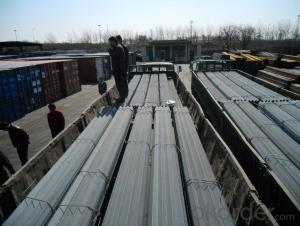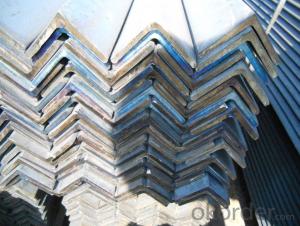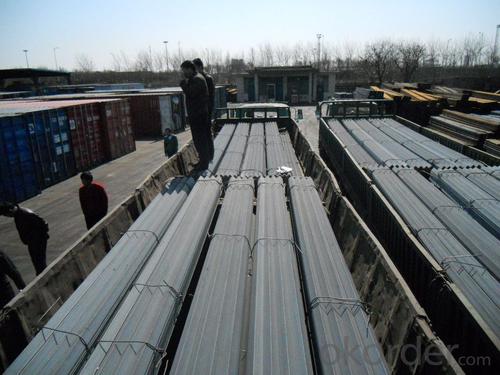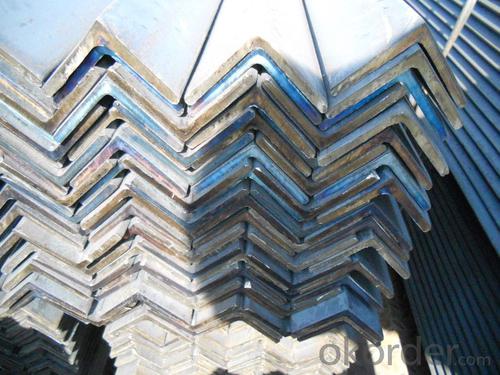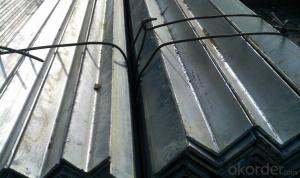Structure Steel Equal Angle
- Loading Port:
- China Main Port
- Payment Terms:
- TT or LC
- Min Order Qty:
- -
- Supply Capability:
- -
OKorder Service Pledge
OKorder Financial Service
You Might Also Like
Product Description:
OKorder is offering Structure Steel Hot Rolled Angle Bar at great prices with worldwide shipping. Our supplier is a world-class manufacturer of steel, with our products utilized the world over. OKorder annually supplies products to European, North American and Asian markets. We provide quotations within 24 hours of receiving an inquiry and guarantee competitive prices.
Product Applications:
Trusses;
Transmission towers;
Telecommunication towers;
Bracing for general structures;
Stiffeners in structural use.
Product Advantages:
OKorder's Structure Steel Hot Rolled Angle Bar are durable, strong, and resist corrosion.
Main Product Features:
· Premium quality
· Prompt delivery & seaworthy packing (30 days after receiving deposit)
· Corrosion resistance
· Can be recycled and reused
· Mill test certification
· Professional Service
· Competitive pricing
Product Specifications:
1.Standards:GB,ASTM,BS,AISI,DIN,JIS
2.Invoicing on theoretical weight or actual weight as customer request
3.Material: JIS G3192,SS400;SS540.
4. Payment terms:
1).100% irrevocable L/C at sight.
2).30% T/T prepaid and the balance against the copy of B/L.
3).30% T/T prepaid and the balance against L/C
5.Sizes:
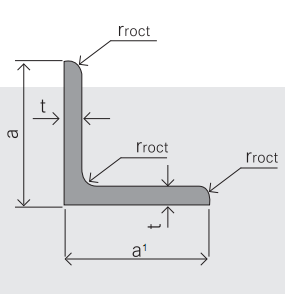
EQUAL ANGLES SIZES |
| ||
a(mm) | a1(mm) | thickness(mm) | length |
25 | 25 | 2.5---3.0 | 6M/12M |
30 | 30 | 2.5---4.0 | 6M/12M |
38 | 38 | 2.5 | 6M/12M |
38 | 38 | 3.0---5.0 | 6M/12M |
40 | 40 | 3.0---6.0 | 6M/12M |
50 | 50 | 3 | 6M/12M |
50 | 50 | 3.7---6.0 | 6M/9M/12M |
60 | 60 | 5.0---6.0 | 6M/9M/12M |
63 | 63 | 6.0---8.0 | 6M/9M/12M |
65 | 65 | 5.0---8.0 | 6M/9M/12M |
70 | 70 | 6.0---7.0 | 6M/9M/12M |
75 | 75 | 5.0---10.0 | 6M/9M/12M |
80 | 80 | 6.0---10.0 | 6M/9M/12M |
90 | 90 | 6.0---10.0 | 6M/9M/12M |
100 | 100 | 6.0---12.0 | 6M/9M/12M |
120 | 120 | 8.0-12.0 | 6M/9M/12M |
125 | 125 | 8.0---12.0 | 6M/9M/12M |
130 | 130 | 9.0-12.0 | 6M/9M/12M |
140 | 140 | 10.0-16.0 | 6M/9M/12M |
150 | 150 | 10---15 | 6M/9M/12M |
160 | 160 | 10---16 | 6M/9M/12M |
180 | 180 | 12---18 | 6M/9M/12M |
200 | 200 | 14---20 | 6M/9M/12M |
6. Material Specifications:
Grade | Yield Strength,N/mm² | Extension Strength N/mm² | |||
Thickness of Steel,mm | |||||
≦16 | >16-≦40 | >40-≦100 | >100 | ||
SS330 | ≧205 | ≧195 | ≧175 | ≧165 | 330-430 |
SS400 | ≧245 | ≧235 | ≧215 | ≧205 | 400-510 |
SS490 | ≧285 | ≧275 | ≧255 | ≧245 | 490-610 |
SS540 | ≧400 | ≧390 | - | - | ≧540 |
Packaging & Delivery of Angle Steel
1. Transportation: the goods are delivered by truck from mill to loading port, the maximum quantity can be loaded is around 40MTs by each truck. If the order quantity cannot reach the full truck loaded, the transportation cost per ton will be little higher than full load.
2. With bundles and load in 20 feet/40 feet container, or by bulk cargo, also we could do as customer's request.
3. Marks:
Color mark: There will be color marking on both end of the bundle for the cargo delivered by bulk vessel. That makes it easily to distinguish at the destination port.
Tag mark: There will be tag mark tied up on the bundles. The information usually including supplier logo and name, product name, made in China, shipping marks and other information request by the customer.
If loading by container the marking is not needed, but we will prepare it as customer request.
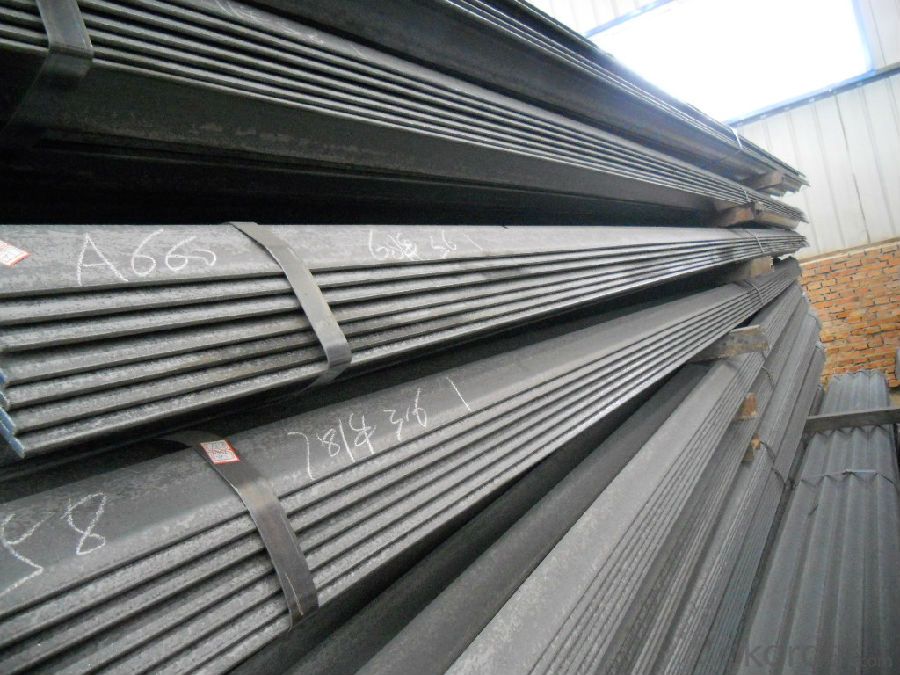
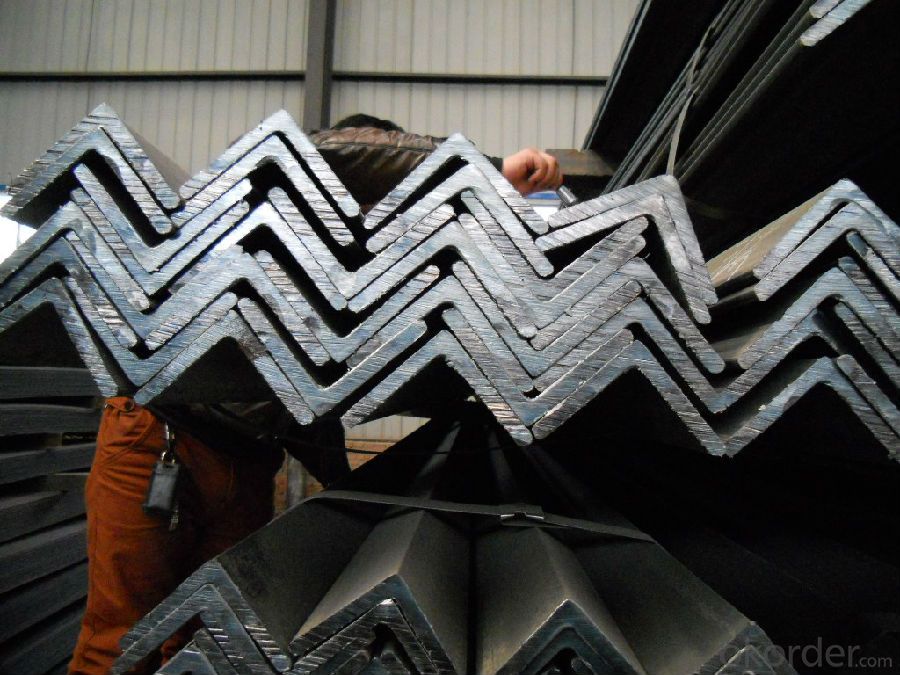
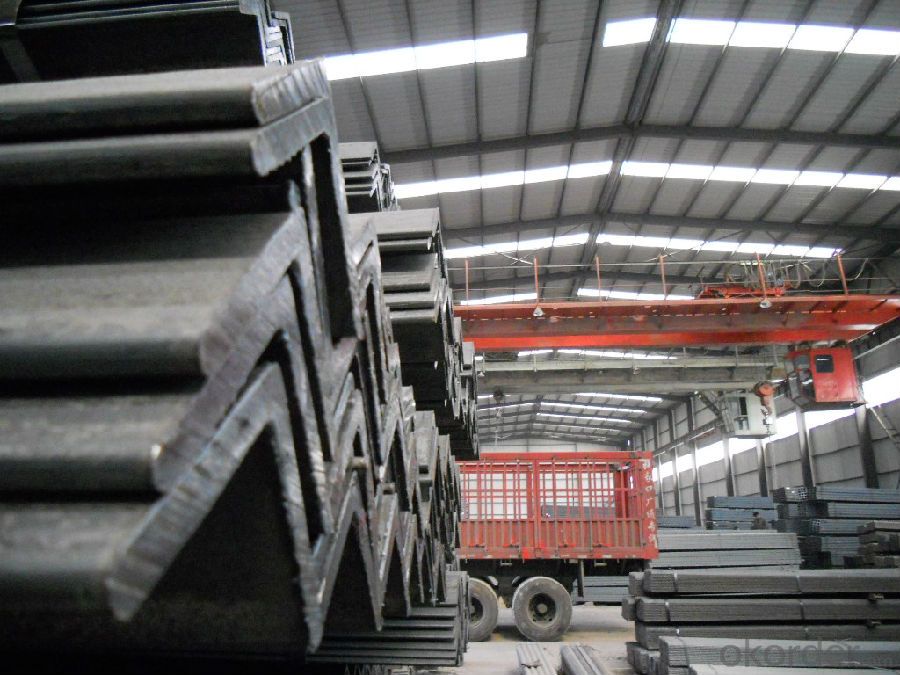
FAQ:
Q1: Why buy Materials & Equipment from OKorder.com?
A1: All products offered byOKorder.com are carefully selected from China's most reliable manufacturing enterprises. Through its ISO certifications, OKorder.com adheres to the highest standards and a commitment to supply chain safety and customer satisfaction.
Q2: How do we guarantee the quality of our products?
A2: We have established an advanced quality management system which conducts strict quality tests at every step, from raw materials to the final product. At the same time, we provide extensive follow-up service assurances as required.
Q3: How soon can we receive the product after purchase?
A3: Within three days of placing an order, we will begin production. The specific shipping date is dependent upon international and government factors, but is typically 7 to 10 workdays.
Q4: What makes stainless steel stainless?
A4: Stainless steel must contain at least 10.5 % chromium. It is this element that reacts with the oxygen in the air to form a complex chrome-oxide surface layer that is invisible but strong enough to prevent further oxygen from "staining" (rusting) the surface. Higher levels of chromium and the addition of other alloying elements such as nickel and molybdenum enhance this surface layer and improve the corrosion resistance of the stainless material.
- Q: Can steel angles be used in electrical applications?
- Steel angles have a wide range of applications in the electrical industry. They are commonly used as structural supports in various industries, including electrical installations. These angles offer stability and strength to electrical setups, especially when used for mounting equipment like junction boxes, panels, or conduits. One of the key advantages of steel angles is their durability and excellent load-bearing capacity. This makes them suitable for supporting heavy electrical components. Additionally, they are corrosion-resistant, which is particularly important in electrical applications where moisture or environmental factors may be present. Furthermore, steel angles can be easily customized and fabricated to meet specific requirements. They can be cut, drilled, welded, or shaped into various forms to accommodate different electrical configurations. This flexibility allows for easy installation and ensures compatibility with other electrical components. To summarize, steel angles are a reliable choice for electrical applications due to their strength, durability, corrosion resistance, and versatility. They provide crucial support and stability to electrical installations, making them the preferred option for a variety of electrical projects.
- Q: How do you determine the required thickness of a steel angle for a specific load?
- Several factors need to be taken into account in order to determine the necessary thickness of a steel angle for a specific load. Firstly, it is essential to establish the load that will be exerted on the steel angle. This can be achieved by examining the structural design or intended purpose of the steel angle. The load may be either static, such as the weight of a structure, or dynamic, like the force from moving objects or wind. Once the load is known, the subsequent step involves calculating the bending moment and shear force that the steel angle will endure. The bending moment measures the degree of flexing or bending of the steel angle under the applied load, while the shear force measures the internal forces acting parallel to the cross-sectional area. Typically, engineering principles and formulas such as the moment of inertia and maximum stress formula are employed to calculate the bending moment and shear force. These calculations consider the dimensions of the steel angle, the applied load, and the properties of the steel material. Once the bending moment and shear force are determined, the required thickness of the steel angle can be calculated. This calculation necessitates the selection of an appropriate safety factor, which accounts for uncertainties and potential variations in the applied load or the strength of the steel material. The safety factor is typically determined by industry standards or codes. Using the maximum stress formula, which relates the bending moment, shear force, and dimensions of the steel angle to the stress experienced by the material, the required thickness can be calculated. By rearranging the formula, the necessary thickness can be solved for, ensuring that the steel angle is sufficiently strong to withstand the applied load without failure or deformation. To summarize, determining the necessary thickness of a steel angle for a specific load involves analyzing the load, calculating the bending moment and shear force, selecting a safety factor, and utilizing the maximum stress formula to solve for the required thickness. It is crucial to consult engineering principles, codes, and standards to ensure that the steel angle is appropriately sized to withstand the applied load.
- Q: Angle iron specifications 125 * 80 * 101 m multiple
- Angle iron specifications 125 * 80 * 10 weight: 15.3075kg/m.Angle called angle, the steel strip is perpendicular to each other on both sides into the corner. There are equal angles and unequal angles. The two sides of an equal angle steel are equal in width. The specifications are expressed in millimeters of edge width * edge width * edge thickness. Such as "/ 30 x 30 x 3", that is 30 mm width equal angle, edge thickness of 3 mm. Also available models that model is the number of centimeters wide, such as angle 3#. The model does not mean the size of the different edges and sizes of the same model. Therefore, the width, the edge and the thickness of the angle iron should be filled out in the contract and other documents, so as not to be indicated by the model alone. Standard Specification for hot-rolled equal angle iron is 2#-20#. The angle iron can be made up of different force components according to the different structure, and can also be used as the connecting piece between the components. Widely used in a variety of architectural and engineering structures, such as beams, bridges, towers, hoisting and conveying machinery, ships, industrial furnace, reaction tower, container frame and warehouse.
- Q: What are the different methods of joining steel angles?
- There are various methods of joining steel angles, including welding, bolting, riveting, and using adhesive bonds. Each method offers its own advantages and considerations depending on the specific application and requirements.
- Q: How do you calculate the moment resistance of a steel angle?
- To calculate the moment resistance of a steel angle, you need to consider the geometry and material properties of the angle. The moment resistance refers to the ability of the angle to withstand bending forces. First, you need to determine the section modulus, which is a measure of the shape's resistance to bending. The section modulus can be calculated by taking the moment of inertia of the angle (I) and dividing it by the distance from the centroid of the shape to the furthest point (c). Next, you need to determine the yield strength of the steel angle. This is the point at which the material starts to deform permanently. The yield strength is typically provided by the manufacturer or can be obtained from material testing. Finally, the moment resistance can be calculated by multiplying the section modulus (Z) by the yield strength (σ). This gives you the maximum moment the steel angle can resist before it starts to deform permanently. Moment Resistance = Z * σ It is important to note that this calculation assumes the steel angle is subjected to pure bending. If there are additional factors such as axial or shear forces, additional calculations or considerations may be required. Additionally, it is always recommended to consult relevant design codes or engineering handbooks for more accurate and detailed calculations.
- Q: What are the different types of surface finishes available for steel angles?
- There are several different types of surface finishes available for steel angles, each providing unique characteristics and benefits. 1. Mill Finish: This is the most basic and common type of surface finish for steel angles. It is essentially the raw, untreated surface of the steel, which may have some imperfections and roughness. Mill finish is often used for structural applications where aesthetics are not a priority. 2. Hot-Dip Galvanized: This surface finish involves immersing the steel angle in a bath of molten zinc, creating a protective coating that prevents corrosion. Hot-dip galvanized steel angles are highly resistant to rust and can be used in outdoor or corrosive environments. 3. Powder Coated: Powder coating is a process where a dry powder is electrostatically applied to the steel angle and then cured under heat. This creates a durable and attractive finish that provides excellent resistance to chipping, scratching, and fading. Powder coated steel angles are commonly used in architectural and decorative applications. 4. Painted: Steel angles can also be painted with various types of paint, such as epoxy, enamel, or acrylic. Paint provides a protective layer and can enhance the appearance of the steel angle. However, painted surfaces may be more susceptible to chipping and require periodic maintenance. 5. Stainless Steel: Stainless steel angles have a naturally smooth and polished surface due to their composition. They are highly resistant to corrosion and staining, making them suitable for applications in industries such as food processing, pharmaceuticals, and marine environments. 6. Shot Blasting: Shot blasting is a surface treatment process where steel angles are bombarded with small metallic or non-metallic particles at high velocity. This removes any rust, scale, or contaminants from the surface, resulting in a clean and roughened finish. Shot blasting prepares the steel angle for further coating or painting. These are just a few examples of the different types of surface finishes available for steel angles. The choice of finish depends on the specific requirements of the application, including factors such as corrosion resistance, aesthetics, durability, and cost.
- Q: How do you calculate the radius of gyration for a steel angle?
- When calculating the radius of gyration for a steel angle, one must consider the dimensions and properties of the angle. This measure determines how the mass of an object is distributed around its axis of rotation, indicating the distance of the mass from the axis and its impact on rotational stability. The formula for determining the radius of gyration of a steel angle is as follows: k = √(I / A) In this formula: - k represents the radius of gyration - I denotes the moment of inertia regarding the angle's axis of rotation - A represents the cross-sectional area of the steel angle The moment of inertia (I) signifies an object's resistance to changes in rotational motion and depends on its shape and size. The cross-sectional area (A) of the steel angle refers to the total enclosed area within its shape. To calculate the moment of inertia, one can utilize the specific formula for the steel angle's shape. For instance, if the angle possesses equal flanges, the formula becomes: I = (b1 * h1³ + b2 * h2³) / 12 In this formula: - b1 and b2 denote the widths of the angle's flanges - h1 and h2 represent the thicknesses of the angle's flanges After determining the moment of inertia and the cross-sectional area, these values can be substituted into the radius of gyration formula to obtain the radius of gyration (k). It is essential to acknowledge that the radius of gyration is a theoretical value assuming the object possesses a perfect, homogeneous shape. In reality, factors like material imperfections, loading conditions, and connection details can impact the actual behavior and stability of a steel angle. Therefore, it is always advisable to consult engineering resources or professionals for accurate and specific calculations pertaining to structural design and analysis.
- Q: Are there any environmental benefits of using steel angles?
- Yes, there are several environmental benefits of using steel angles. Firstly, steel is a highly sustainable material as it is 100% recyclable without losing its strength or quality. This reduces the need for new steel production and saves energy and resources. Additionally, steel angles have a long lifespan and require minimal maintenance, resulting in lower lifecycle costs and reduced environmental impact. Furthermore, steel is resistant to natural elements, such as fire and corrosion, which increases its durability and minimizes waste. Overall, choosing steel angles contributes to a more sustainable and eco-friendly construction industry.
- Q: What is the typical thickness of the legs of a steel angle?
- The typical thickness of the legs of a steel angle can vary depending on the specific application and structural requirements. However, in general, the thickness of steel angle legs can range from 1/8 inch to 3/4 inch.
- Q: What are the different load-carrying capacities for steel angles?
- The load-carrying capacities for steel angles can vary depending on several factors such as the size and shape of the angle, the type of steel used, and the specific application or use case. Generally, load-carrying capacities for steel angles are determined by considering the maximum allowable stress or load that the angle can withstand without experiencing permanent deformation or failure. This is often expressed in terms of the maximum axial or bending load that an angle can support. To determine the load-carrying capacity of a specific steel angle, engineers and structural designers refer to industry standards and guidelines, such as the American Institute of Steel Construction (AISC) Manual of Steel Construction. These standards provide tables and formulas that take into account various factors such as the angle's dimensions, thickness, and moment of inertia to calculate its load-carrying capacity. It is important to note that load-carrying capacities for steel angles are typically specified for specific loading conditions and safety factors. These factors include the type of load (e.g., axial or bending), the direction and magnitude of the applied load, and the safety factor required to ensure the structural integrity and durability of the angle. Therefore, it is essential to consult the relevant codes, standards, and engineering resources to determine the specific load-carrying capacity of a particular steel angle for a given application. Professional structural engineers and designers are best equipped to assess and determine the load-carrying capacities of steel angles based on their expertise and familiarity with the applicable design codes and standards.
Send your message to us
Structure Steel Equal Angle
- Loading Port:
- China Main Port
- Payment Terms:
- TT or LC
- Min Order Qty:
- -
- Supply Capability:
- -
OKorder Service Pledge
OKorder Financial Service
Similar products
Hot products
Hot Searches
Related keywords
